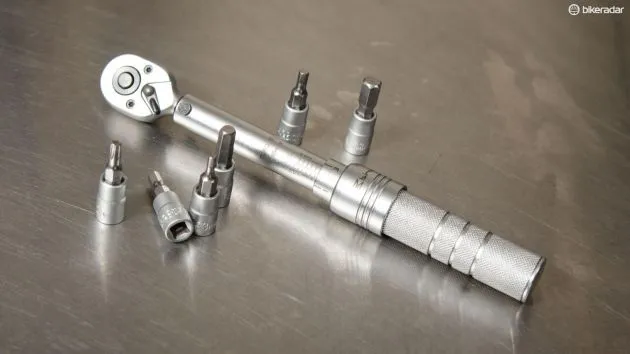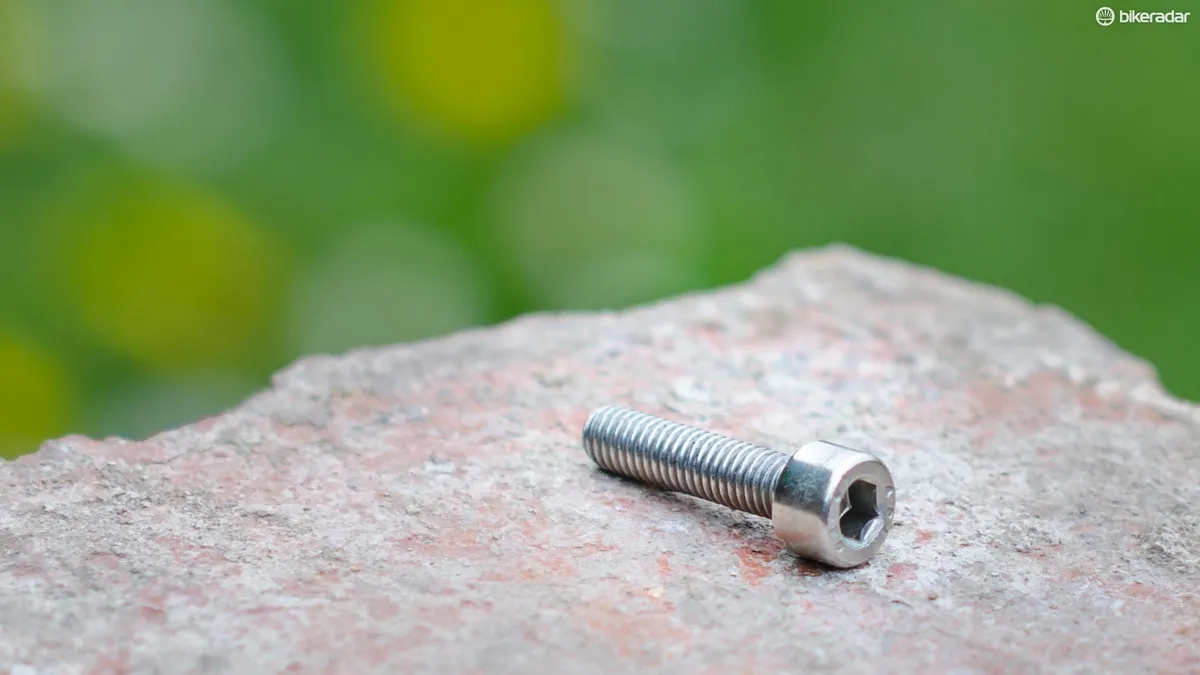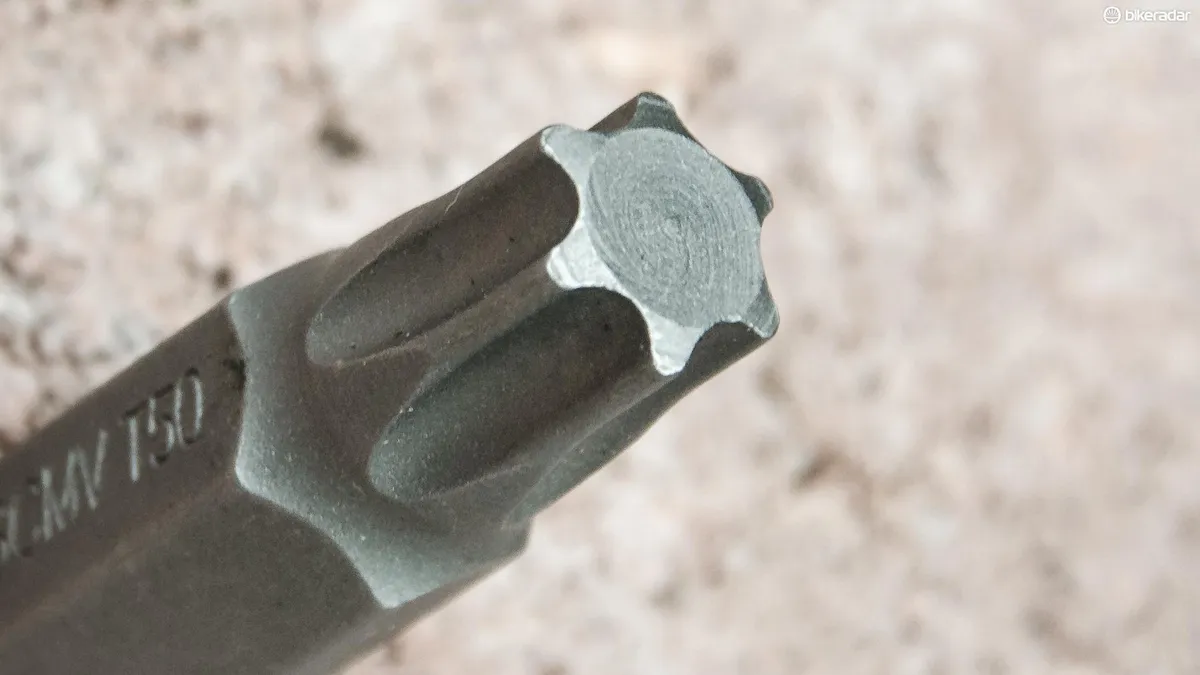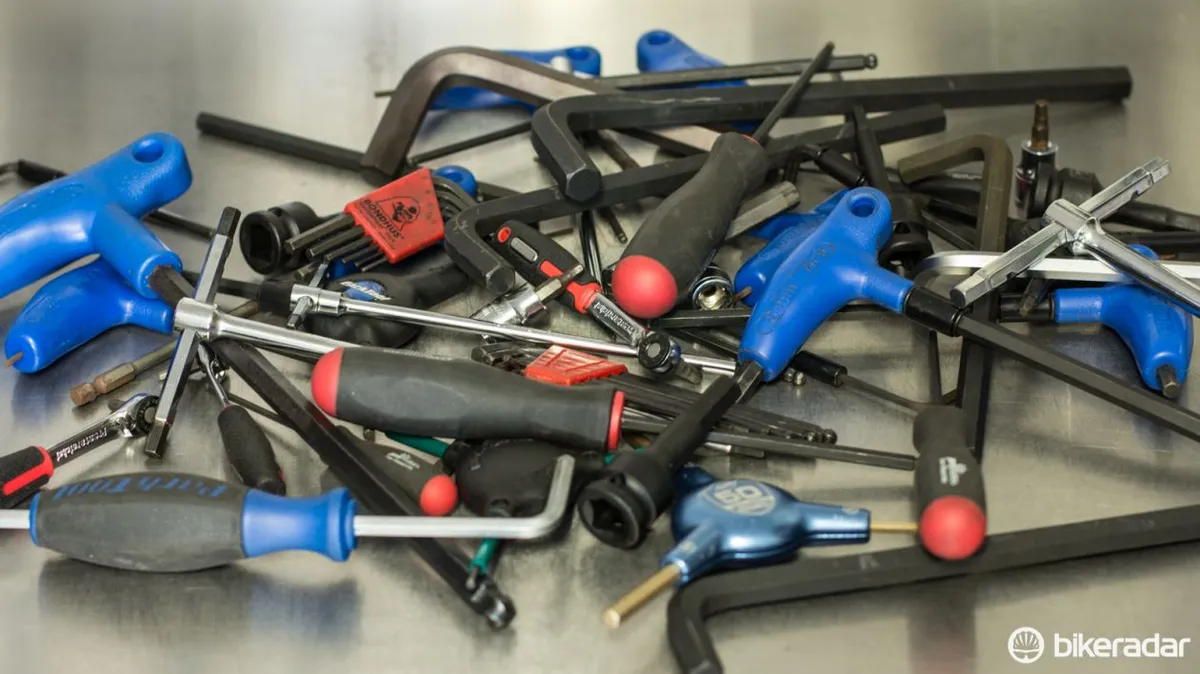You spend thousands on a bicycle, then ‘fix’ it with the cheapest little multitool you own. I’ve done it, you’ve done it. That creepy guy over there’s done it (don’t look now) and he’s running a blog about it. Why spend a fortune on tools when everything you need is on one little folding thing?
- Hex keys: everything you need to know
- 12 bike maintenance misconceptions that could be costing you time and money
- Does roadie masochism go deeper than you thought?
Perhaps the best reason is that it’ll make you faster. This is true and I’ll get in to why in a minute. Other reasons include maintenance becoming almost fun, and proper tools being very, very, very shiny.
I’m not talking about getting a whole workshop’s worth. But you do need these things: quality sets of hex keys and Torx keys, a chain cleaner and a track pump. And that’ll pretty much do, for 90 percent of the time. Why those? It’s funny you should ask.
Long, P-handled hex keys are a revelation if all you’ve done previously is faff about with a multitool, trying to stop it folding up, catching in the cables or gouging at your dropper post as you fumble slowly towards fruition. They reach right through nests of hoses, the ball ends allow a few degrees of offset and the short ends cope with plenty of torque. Lovely. Checking bolts and adjusting parts suddenly become way quicker and easier.

Of course, a finely-tuned bike fit makes you faster and less prone to injury — both from repetitive strain and from crashing — and proper tools make achieving it oh-so-much easier. So that’s some extra speed right there and also it means new shiny things (probably).
I’ve often wondered why Torx even exists and if the smattering of bicycle ones are some kind of test
The good news is there are millions of sets of hex keys for general automotive use, so prices are very reasonable. And so long as you go for a reasonable brand, key quality is much of a muchness. For further reading on this topic head across to Dave Rome's exhaustive look at hex keys. As with any tool though, beware of those advertised as ‘carbon steel’. All steel has carbon in it — if it has none, you’re looking at iron. As it is, it could be low-carbon steel, which is relatively soft.
This isn’t to say that carbon steel (or as it’s otherwise know, ‘steel’) is inherently bad. There are loads of types and grades — low carbon steel is soft, while high carbon is brittle, and in the middle it can be just right. It’s more that the words ‘carbon steel’ don’t tell you which one it is or in fact anything other than it’s not stainless.
Stainless steel is alloyed with further things (principally at least 13 percent chromium) for superior strength and hardness. So if all you have to say about your tool is that it’s carbon steel, you’ve got nothing but empty marketing. It’s like making a virtue of your kebab being ‘meat’.

You need a quality set of P-handled Torx keys for the same reason — they work so much better than a multitool, and that’s despite Torx fasteners being inherently evil. They lurk among the regular hexes like saboteurs, just waiting to be mashed up with a careless hex key.
A chain cleaning device might not seem as ‘core’ as hex and Torx keys, but it’s actually going to add even more speed than well-fettled controls
I’ve often wondered why Torx even exists and if the smattering of bicycle ones are some kind of test. I’ve wondered this while swearing at a volume once reviewed as ’Sweeping, operatic and incredibly frightening’ by the local arts critic, after it took out all his windows from nine miles away.
It turns out Torx exists because of factories. Back in 1967, fastener designs were all pretty flawed. Slotted heads are prone to slippage and the tool must be adjusted up to 90 degrees just to fit in (wasted seconds build up on a high-volume production line). Meanwhile, crossheads like Phillips and PoziDriv (yes, they’re different and good at mashing each other up, because why not?) deflect your twisting forces upwards, thanks to their sloped walls. That limits the maximum torque you can put on them and invites a big slip and rounding out.
By the way, if these sound like screw rather than bolt problems, you’re wrong — those are not actually bolts you’re undoing on your bike. Not unless they pass right through and are fastened with a nut. If they thread into a tapped hole and undo with a screwdriver, they’re machine screws. They’re still screws if they undo with a hex key — socket screws. Not bolts. And they aren’t great either.
Tightening hexes creates stress risers that can cause failure and as you doubtless already know they’re prone to rounding out. Truth is they’re actually designed to round out — it stops the fastener being overtightened, in what’s possibly the most annoying failsafe ever. It’s like filling an airbag with poisonous gas to stop drivers going too fast.

That’s where Torx came in (like a faceful of gas). The design prevents slippage and stress risers, and needs no end-load. Consequently it takes very high torques, which on a bicycle is… completely unnecessary. So I’m still not really sure why the damn things are there. Need to replace one? Get a screw pitch gauge (around £5), a steel ruler, and search eBay for sexy places like Total World O’ Bolts 4 U. It probably even exists. Feel free to replace the Torx head with a hex.
Brilliantly, there’s now also Torx Plus, a slight redesign from the 1990s that was all about minimising wear and increasing torque loadings, and totally not about the patent expiring. You’ll be pleased to know Torx Plus drivers won’t fit regular Torx fasteners.

A chain cleaning device might not seem as ‘core’ as hex and Torx keys, but it’s actually going to add even more speed than well-fettled controls. I underestimated this for years because big tyres, low pressures and ever-changing ground conditions really mask the drag of a blackened, gloopy chain. Branching out to road cycling (and Strava alongside it) has been eye-opening.
A dirty chain that I thought was perfectly acceptable adds 60 seconds to an 11-minute climb. A slightly minging one actually has a noticeable effect on gear choice. It’s up there with tyre pressure for soaking up power. Who knew? That creepy guy over there didn’t (don’t look now), but he’s on his blog again and oh god no.
Chain cleaner devices aren’t perfect — they don’t clean the narrow link plates well — but they’re a good headstart at getting chains shiny. Failing that, get a rough, V-cut chain sponge that won’t disintegrate (Fenwicks do one for around £2) and use that. Vigorously. Like you hate it. Even though you love it.
The last item on my list is a track pump, for what should be obvious reasons, so the less said about those the better. ‘Air parp easy, pressure nice.’ See? That was better.

